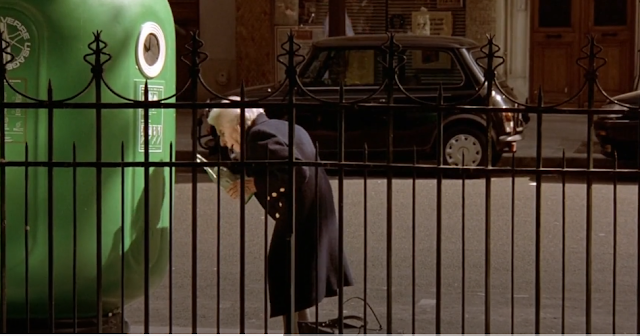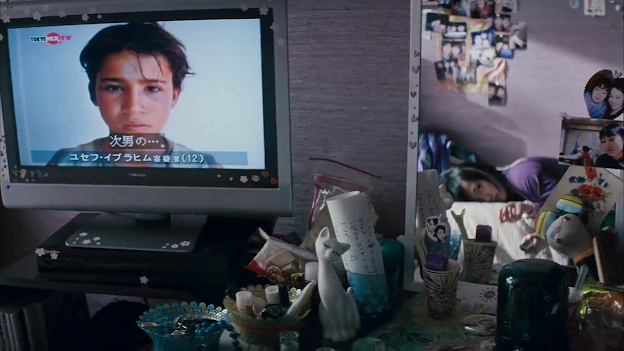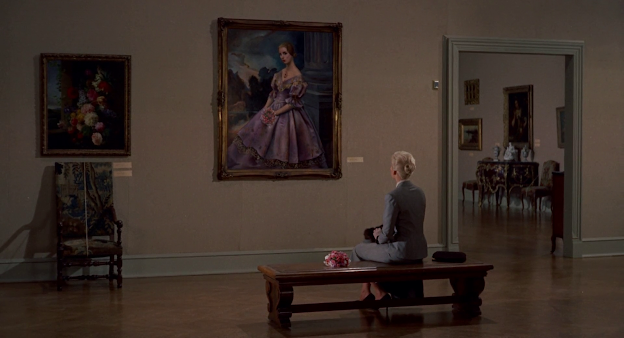Blog 4
Kieslowski as an Auteur
If we talk about the auteur theory,
we should look at the stylistic approaches of the directors. I want to look at
the directors’ two different movies A Short Film About Love (1988) and Three
Colours: Blue (1993) and analyze two movies comparatively for the purpose
of finding the directors’ stylistic marks which are repeated in his movies. In both
movies the director chooses to emphasize on emotions a lot. A short Film
About Love tells us a story of lonely individuals and their effort to
connect. The main characters are incompatible in life in different ways. Magda
is a social woman when we are looking from outside. She has communication
skills and lives in a social circle. On the other hand, she is too callow about
expressing emotions. She is incompetent about emotional skills and she do not
believe love.
On the other hand, Although Tomek is a young man who has no social or communicational skills, he is sentimental, and he has ability to love someone, he has very powerful emotions inside him. https://www.youtube.com/watch?v=rsle7inq3Q0 Wollen says: “In time, owing to the diffuseness of the original theory, two main schools of auteur critics grew up: those who insisted on revealing a core of meanings, of thematic motifs, and those who stressed style and mise en scène.” (p.456) I think the thematic motif of the Kieslowski’s movie is about human’s emotions and the way of how we handle these emotions. What we experience and what we did not affects our communication skills a lot. The clash between two characters is resolving at the end of the movie when Magda sees herself with the eyes of Tomek thanks to the telescope. She can see with Tomek’s eyes to the world now. She understands that how alone she is despite all people around her and power of Tomek’s love. https://www.youtube.com/watch?v=k5UvFeGEGhQ&t=115s
In the Three Colours: Blue Kieslowski deals with
issues in more universal perspective. However, he again focuses on emotions and
dealing with powerful emotions like pain, loss, grief, and loneliness. “The
great directors must be defined in terms of shifting relations, in their
singularity as well as their uniformity.” Wollen says. (p.465) We saw more buildings, apartments,
and windows in A Short Film About Love. Although it deals with bigger
issues, with respect to cinematography we are seeing a lot of details and more
close-ups to objects in Three Colours: Blue. https://www.youtube.com/watch?v=liBfcQBU5tc
It really fits the narrative of the movie because Julie chooses a simple life
after the loss of her family and may be first time in her life, she has no job
to do. She starts to see other people and witness their life. She is interested
in the flute player who lives in the streets and makes music in a simple way. Her
life becomes more and more simpler so, she starts to see hidden small details
and their beautifulness. Like the old lady who still tries to put her bottle in
a recycling box, the movie gives its message through these scenes and says, “life
should keep going and giving up in not a solution”.
The color of blue is of course
too dominant in the movie. We saw this color too much in A Short Film About
Love too: Tomek’s clothing or the props in Magda’s house. The choice of
using red, blue, or white in props or clothing is stylistic in Kieslowski’s
movies. And blue considered as a cold color and it can express emotionlessness,
apathy, and stability of life. Julie’s life becomes more and more blue after
the accident. When a man is escaping from some guys and rings her door for help,
her silence is not because of the fear but because the fact that she has no
idea what to do. She becomes so stranger to the outside world; she does not even
take any action and forgets how to live.
And the last scene of the Three Colours: Blue the director tells us that this story is about a more general thing than someone’s life. There is something common in our lives and we all still have questions about our fate and existence. The movie is about the human journey in the universe. Kieslowski does something tricky in both his films. First, he seems like resolving the problems at the end of the movie, but I think he still left open his endings and let audience interpret. He directs the audience in some way, but he let them keep going alone in this way.
Wollen says : “A valuable work, a powerful work at least, is one which challenges codes, overthrows established ways of reading or looking, not simply to establish new ones, but to compel an unending dialogue, not at random but productively....” (p.470) I think Kieslowski succeed to use all these elements in his movies and he is a great auteur director.
Bibliography
Wollen, Peter. From Signs
and Meaning in the Cinema. Leo Braudy & Marshall Cohen eds. Film Theory
and Criticism 7th edition, New York: Oxford University Press, 2009. (p.455-470)






Yorumlar
Yorum Gönder